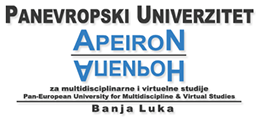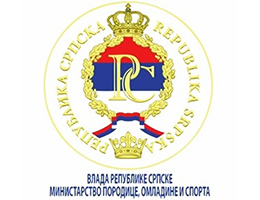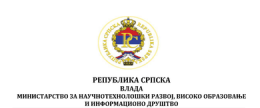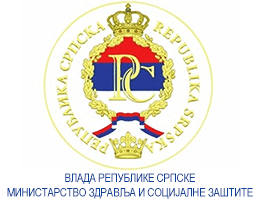Nutritional Status and Body Composition in a Sample of Adults After Nutrition Counseling
Volume 14, Issue 2 (2024)
Volume 14, Issue 2 (2024)
Nutritional Status and Body Composition in a Sample of Adults After Nutrition Counseling
Abstract:
Obesityis one of the most common risks for chronic non-communicable diseases. The aim of this work was
to assess changes in nutritional status and body composition in working adults after nutrition counseling. The research
was conducted during 2022 at the College of Vocational Studies in Subotica, Serbia. The initial assessment included 31
participants and 18 participants in the control assessment. Data on physical activity were collected by a questionnaire.
Nutritional status and body composition were determined using the bioimpendancescale (InBody 230). The five-months
nutrition counseling included practical tips for a balanced diet and physical activity. Pearson’s correlation coefficient and
Wilkoxon’s rank test were applied for the statistical analysis. A quarter of participants had a sedentary lifestyle and only
13% of them are physically active at least 150 minutes a week. The average BMI 27.7 kg/m2, and 62% of participants were
overweight or obese. The respondents weighed an average of 26.6 kg, i.e. 31.2% of fat tissue. After the conuseling, a third
of participants experienced a decrease in percentage of fat tissueand abdominal fat and 40% had an increase in muscle
mass. However, 48% of respondents had an increase in BMIafter counseling.
The body weight, body mass index or the amount of adipose tissue did not change significantly after nutrition conuseling,
butthe deviation of the actual compared to the ideal body masssignificantly greater. After the nutrition counseling, an increase
in muscle mass, i.e. lean body mass and total body waterwas determined.
Keywords:
BMI, fat mass, muscle mas, total body water
Full Text:
References:
Al-Nimr, R. I., Wright, K. C. S., Aquila, C. L., Petersen, C. L., Gooding, T. L., & Batsis, J. A. (2020). Intensive nutrition counseling as part of
a multi-component weight loss intervention improves diet quality and anthropometrics in older adults with obesity. Clinical nutrition
ESPEN, 40, 293-299.
Ash, S., Contento, I., Olfert, M. D., & Koch, P. A. (2023). Position of the Society for Nutrition Education and Behavior: nutrition educator
competencies for promoting healthy individuals, communities, and food systems: rationale and application. Journal of Nutrition Education
and Behavior, 55(1), 3-15.
Eurostat. (2024). Overweight and obesity - BMI statistics. Available from: https://ec.europa.eu/eurostat/statistics-explained/index.
php?title=Overweight_and_obesity_-_BMI_statistics#Obesity_in_the_EU:_gender_differences, cited 20.04.2024.
Croatian Medical Association (2014). MSD Manual of Diagnosis and Therapy. Metabolic syndrome. Split (Croatia): Placebo d.o.o. Available
cited 22.05. 2022.
InBody230 Users Manual (1996). Soul (Corea), BM-ENG1-40-L-140930. Available from: https://nl.inbody.com/wp-content/uploads/2019/01/
InBody230_CDmanual_Eng_L.pdf, cited 22.04. 2024.
Institute of Public Healthof Serbia. (2021). The 2019 Serbian National Health Survey. Belgrade, Institute of Public Healthof Serbia „Dr milan
Jovanović Batut“. Available from: Doshttps://www.batut.org.rs/download/publikacije/ZdravljeStanovnistva2019.pdf, cited 05.03.2023.
National Agricultural Library - U.S. Department of Agriculture. DRI Calculator for Healthcare Professionals. Available from: https://www.nal.
usda.gov/human-nutrition-and-food-safety/dri-calculator, cited 10.04. 2023.
Novaković, B., Mirosavljev, M., Jevtić, M. (2005). Higijena ishrane. Novi Sad. Faculty of Medicine, Novi Sad.
Simić, B. (1998). Medicinska dijetetika. Beograd. Nauka.
Simonyi, G., Bedros, J. R., & Wittmann, I. (2022). Az elhízás modern szemlélete és korszerű kezelése= Modern approach and advanced treatment
of obesity. Lege artis medicinae, 32(6-7), 255-264.
Williams, L. T., Barnes, K., Ball, L., Ross, L. J., Sladdin, I., & Mitchell, L. J. (2019, February). How effective are dietitians in weight management?
A systematic review and meta-analysis of randomized controlled trials. In Healthcare (Vol. 7, No. 1, p. 20). MDPI.
World Health Organization [WHO]. (2018). Global action plan on physical activity 2018–2030: More active people for a healthier world. Geneva:
World Health Organization. Available from: https://apps.who.int/iris/bitstream/handle/10665/272722/9789241514187-en...,
cited 15.04. 2023.
World Health Organization [WHO]. (1995). Physical status: the use and interpretation of anthropometry. Report of a WHO expert committee.
Geneva: World Health Organization. Available from: https://apps.who.int/iris/handle/10665/37003.






